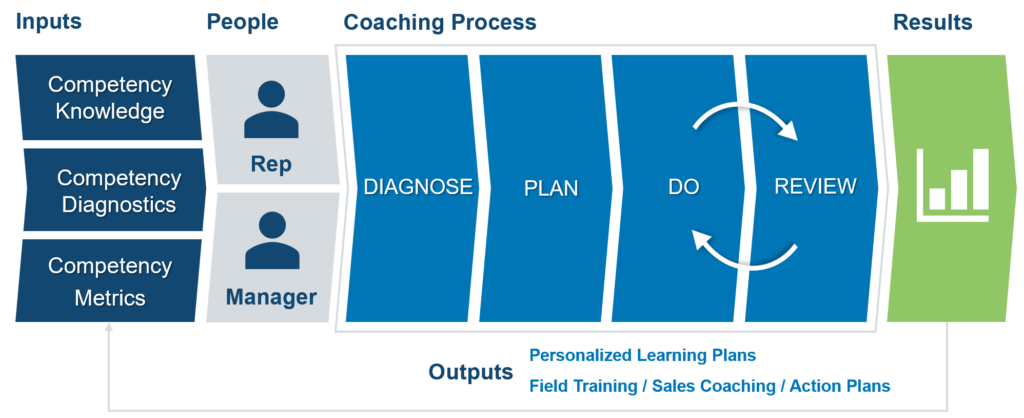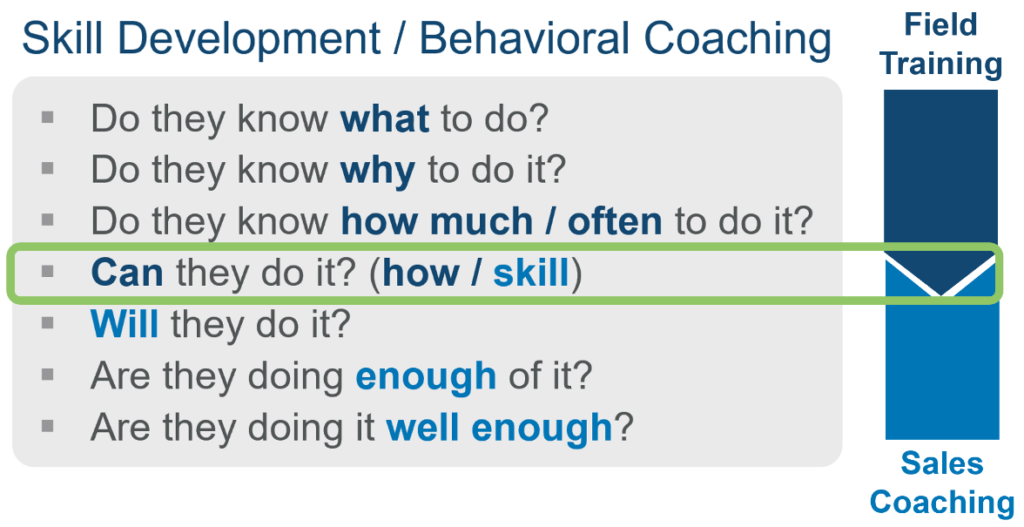by Mike Kunkle
4 min read
I’ve often used the analogy that B2B enterprise sales professionals are the Olympic athletes of the corporate world. To be clear, I have nothing but respect for accountants, IT specialists, human resources professionals, and the various other roles that are necessary for a company to operate successfully. That said, try putting them in a front line B2B sales role focused on the complex sale at the enterprise level and see how that works out for you.
I assume you’ve heard the sayings, “Nothing happens until somebody sells something” and “Sales is the lifeblood of any company.” Given that, it’s surprising how little time and energy companies spend developing sales professionals into the best possible corporate athletes that they can be.
Oh, sure, we throw money at the sales department. We train them, often without reinforcement. And, sometimes with various methodologies that aren’t even aligned. We throw bright, shiny SaaS software at them, often not integrated, creating workflow inefficiencies. We pay them well and provide incentive motivations and trips (Cancun, anyone?).
But are we doing the very best thing we can do to help them improve their performance? Are we coaching effectively?
The answers, unfortunately, are “not often enough” and “not well enough.”
What is Coaching, Really?
I could share reams of research data backing up that statement, but I’ll spare you. Instead, I’ll opt to provide clarity on what you could be doing to radically improve the performance of your sales force.
Let’s start with this definition.
Sales coaching is a formal developmental process where sales managers partner with their sales reps to improve sales performance.
There are, however, various forms of coaching, and other things that aren’t coaching, but do support it.
You can do quick-hit coaching or opportunistic, in-the-moment coaching (this is usually just directive feedback). Note: Feedback is often over-utilized by managers.
You can ensure reps understand expectations and know what, why, and how to do something (this is actually training). Note: Training is often applied to problems it won’t solve.
You can coach an extensive list of topics, such as:
- Territory optimization
- Account planning
- Lead management
- Product/services/solution knowledge
- Prospecting
- Sales call planning
- Sales meeting management
- Opportunity qualification
- Opportunity management
- Presentations
- Negotiating
- Pipeline & forecast management
- Strategic account management
- Time/task management/organizational skills
- Career/professional development
- Skill development & behavioral coaching
- Growth mindset
- And more
Big list, right? What I teach managers to do is pull out “Skill development & behavioral coaching” from that list, and learn to do that kind of coaching, across all the other topics. You can teach skills and coach to improve them for everything reps do.
Because this, folks, is where the big lift comes from.
Have you ever seen the movie Groundhog Day with Bill Murray? It’s a movie where he plays a field news reporter and lives Groundhog Day, over and over. If you find yourself in a seemingly endless loop, saying the same things to your reps and team repeatedly, as many sales managers do, you already know what I mean. Skill development and behavioral coaching are your tickets out.
A Sales Coaching Framework and Process
If you follow my work, you know I develop frameworks, models, and systems. They are what I’ve seen produce radical change and impact organizational results. The below framework is the one I use for sales coaching, with the Diagnose/Plan/Do/Review coaching process embedded. If you follow the Inputs, People, Process, Outputs, and Results from left to right, I think it’s relatively simple.

- Let’s start with Inputs. Competency knowledge means the competencies you’ve identified for your sales roles in your company and the sales methodology you use. The diagnostics include things like the reports you have available. It could also include assessments, either third-party talent assessments or assessments based on your company’s competencies. And competency metrics are the leading and lagging indicators you track, which can point to strengths and areas for development.
- Including People here seems like a no brainer, but it’s an important reminder that this is a journey that you, as managers, take together with their reps, not something you do to Reps need to own their development – you are their guide or Sherpa.
- The Coaching Process, as you already know, is DIAGNOSE, PLAN – where Outputs like learning plans, field training, and sales coaching plans are built – and the circular DO and REVIEW stages – where these outputs are executed.
- Done well, this culminates in improved Results, in an area that you both chose to target, based on your earlier joint diagnosis.
- After which, you return to the beginning and start all over again, creating a cycle of continuous, targeted improvement.
By the way, it’s not lost on me that you are reading this on Xvoyant’s blog. In the DIAGNOSE stage, Xvoyant will allow you to identify and prioritize each rep’s areas for improvement. Then it helps you measure performance, activities, and coachability to predict forecast viability and rep engagement. When you merge the Sales Coaching Framework and Coaching Process that I’m recommending here with software that supports it, like Xvoyant, the results are outstanding.
How Training, Feedback, and Coaching Work Together
The Outputs can get a little tricky for some. To help reduce confusion here, let’s define a few terms:
- Training teaches people what, why, and how to do something. And, if it applies, when, where, and how often to do it.
- Feedback is your advice. It’s often corrective or evaluative and focused on previous or current behavior. It’s usually directive (telling vs. guiding) and helps employees understand what prevents them from reaching their current goals or what specifically to do differently. (Note: many managers default to giving feedback, even when they should be training or coaching. Then they wonder why they’re not having an impact.)
- Coaching, again, is a formal developmental process where managers partner with their reps to improve sales performance. It helps people do something better. It’s about diagnosing performance, planning solutions, executing those plans, and reviewing results together. Coaching is future-focused and developmental.
Training and coaching dovetail, as you see in the below diagram. Feedback can be used in both when being directive and offering your advice makes sense.

When you diagnose and plan, you may find your reps needs training first, often on a new skill (or on a more effective method than what they are doing today). If your sales reps don’t know what, why, and how to do something, you can’t yet coach them. You may offer feedback during training, as needed.
Once they know what, why, and how to do something, you can coach your sales reps to get even better at what you taught them. Sometimes, during coaching, you’ll offer your feedback, but mostly you will continuously guide them through facilitation, questioning, and engaging them in their journey toward mastery.
Hopefully, this post has given you some clarity on sales coaching and new ideas to think about as you work to improve the performance of your corporate sales athletes – and your own coaching expertise.
Want to learn more and dig deeper? I’ve got an eBook on Sales Coaching Excellence that expands on these concepts, which you can access here. And, 14 sales experts shared their tips for coaching in this blog post from SPARXiQ.
___________________________
Mike Kunkle is VP, Sales Effectiveness Services at SPARXiQ. You can follow him on LinkedIn.